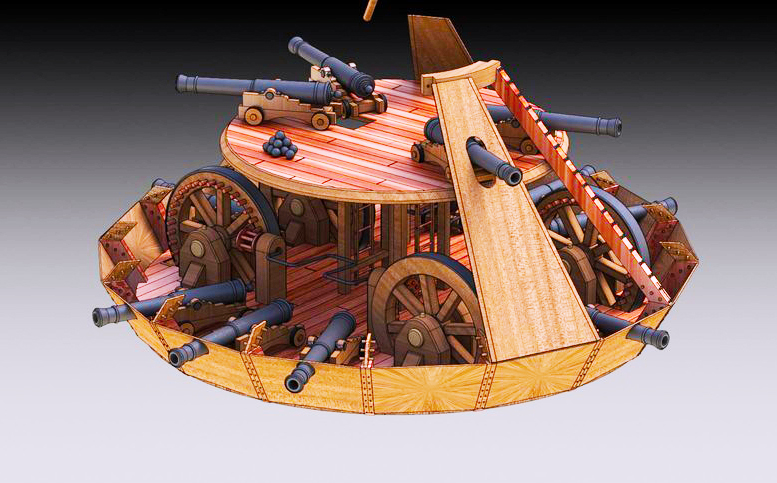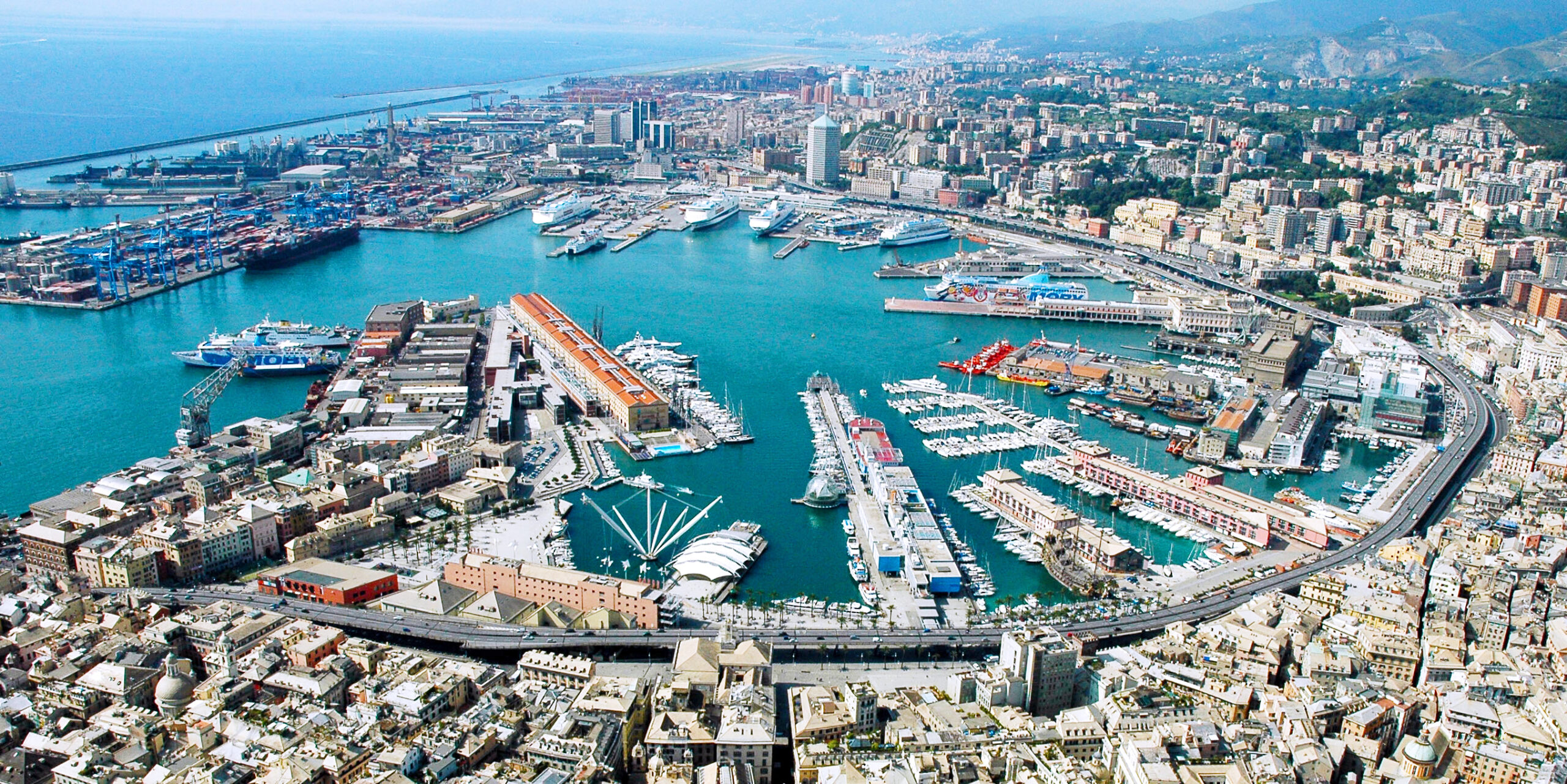No single individual defines the idea of a Renaissance man better than Leonardo da Vinci. Though he may be most famous for his works as an artist, Leonardo spent quite a bit more time working on his endeavors in science and technology. His detailed sketches and distinct artistry played a significant role in his inventions and his sketchbooks later provided evidence that Leonardo envisioned many ideas long before the technology to build them actually existed.
Parachute
Though credit for the invention of the first practical parachute usually goes to Sebastien Lenormand in 1783, Leonardo conceived of the idea of the parachute hundreds of years earlier. He made a sketch of the invention with this accompanying description: “If a man has a tent made of linen of which the apertures (openings) have all been stopped up and it be twelve braccia (about 23 feet) across and twelve in depth, he will be able to throw himself down from any great height without suffering any injury.”
Perhaps the most distinct aspect of Leonardo’s parachute design was that the canopy was triangular rather than rounded, leading many to question whether it would actually have enough air resistance to float. Since his parachute was to be made with linen covering a wood frame, the weight of the device also was viewed as an issue. Like many of his ideas, the invention was never actually built or tested by Leonardo himself. In 2000, daredevil Adrian Nichols constructed a prototype based on Leonardo’s design and tested it. Despite skepticism from experts, the design worked as intended and Nichols even noted that it had a smoother ride than the modern parachute.
33-Barreled Organ
Canons were an important military weapon during Leonardo’s lifetime. The problem that he saw was the time that it took to reload. His solution to that problem was to build multi-barreled guns that could be loaded and fired simultaneously. Leonardo’s 33-barreled organ, featured 33 small-caliber guns connected together. The canons were divided into three rows of 11 guns each, all connected to a single revolving platform. Attached to the sides of the platform were large wheels.
All the guns on the organ would be loaded and then, during battle, the first row of 11 would be fired. The platform would then be rotated to properly aim the next row of canons. The idea was that while one set of canons was being fired, another set would be cooling and the third set could be loaded. This system allowed soldiers to repeatedly fire without interruption.
The weapon is referred to as an organ because the rows of canon barrels resemble the pipes of an organ. Leonardo’s design for the 33-barrelled organ is generally regarded as the basis for the modern day machine gun – a weapon that did not develop for commercial use until the 19th century.
Armored Car
The precursor to the modern tank, Leonardo’s armored car was capable of moving in any direction and was equipped with a large number of weapons. The most famous of Leonardo’s war machines, the armored car, was designed to intimidate and scatter an opposing army.
The vehicle was designed to have a number of light cannons arranged on a circular platform with wheels that allowed for 360-degree range. The platform would have been covered by a large protective cover (much like a turtle’s shell), reinforced with metal plates, which was to be slanted to better deflect enemy fire. It also had a sighting turret on top to coordinate the firing of the canons and the steering of the vehicle. The motion of the machine was to be powered by eight men inside of the tank who would constantly turn cranks to spin the wheels.
Giant Crossbow
With weapons such as the 33-Barreled Organ, Armored Car and Giant Crossbow, it is likely that Leonardo understood psychological effects of weapons in warfare better than his contemporaries. He seemed to know instinctively that the fear weapons instill in enemies was just as important as the damage they could actually inflict. This was certainly the idea behind his giant crossbow. Designed for pure intimidation, Leonardo’s crossbow was to measure 42 braccia (or 27 yards) across. The device would have had six wheels (three on each side) for mobility and the bow itself would have been made from thin wood for flexibility.
Rather than fire giant arrows, the crossbow instead seems to be designed to fire large stones or possibly flaming bombs. For use, a soldier would spin a crank to pull back the bow and then load the artillery. The soldier would then use a mallet to knock out a holding pin and fire the weapon. His vivid drawings of the giant crossbow invention also make it clear that the idea behind the impressive weapon was to terrify enemies into fleeing, rather than fighting.
Triple Barrel Canon
As a military engineer, one of Leonardo’s key beliefs was that mobility was crucial to victory on the battlefield. This idea was found in many of his war inventions. A prime example of this mobile tactical attack is evidenced in his triple barrel canon invention.
During the late 15th and early 16th centuries, canons were generally used in stationary defensive position rather than on the battlefield itself. Two important factors led to this static use of canon – their heavy weight and the time it took to reload. Leonardo designed his triple barrel canon to solve both of these problems in the form of a fast and light weapon that could inflict damage on the battlefield.
The design featured three thin canons that would be front-loaded and adjustable in height. This allowed three canons to be reloaded at once, enabling a greater rate of fire. The lighter weight and large wheels allowed the gun carriage to be moved around to different areas during battle.
Clock
Leonardo did not invent the clock, but he did design a more accurate timepiece. While clocks that showed hours and minutes had improved during the 15th century, Leonardo’s was a significant step forward. His clock had two separate mechanisms, one for minutes and one for hours. Each was made up of elaborately connected weights, gears and harnesses. The clock also had a dial for keeping track of moon phases. Leonardo’s major innovation was to use springs in addition to weights to operate his clock.





